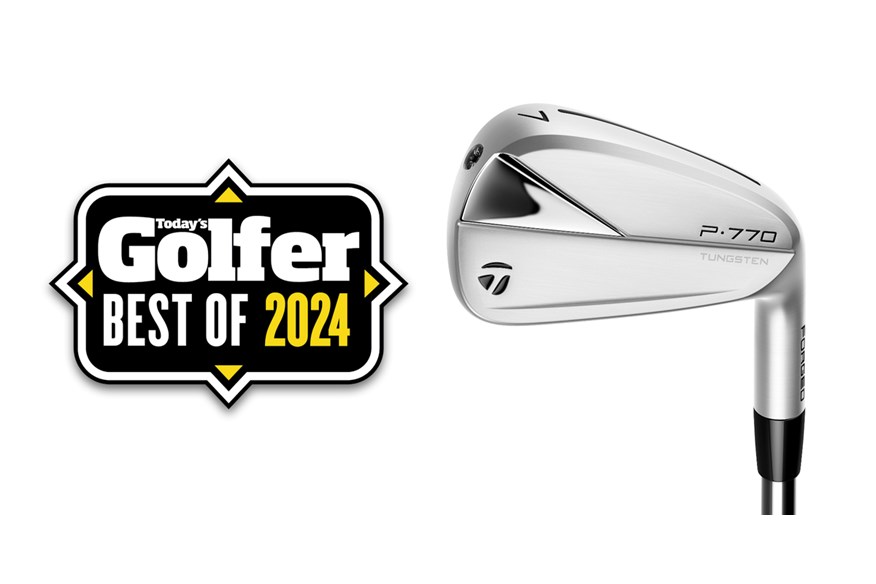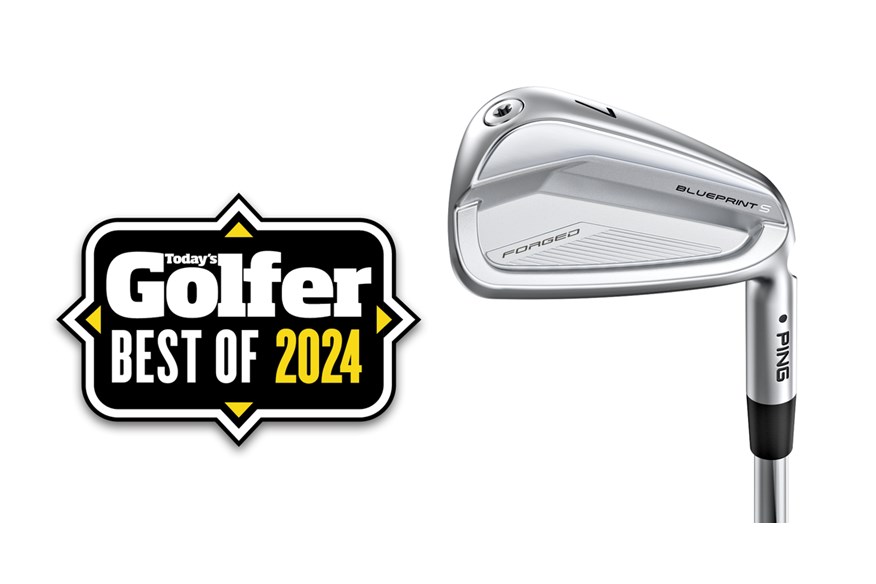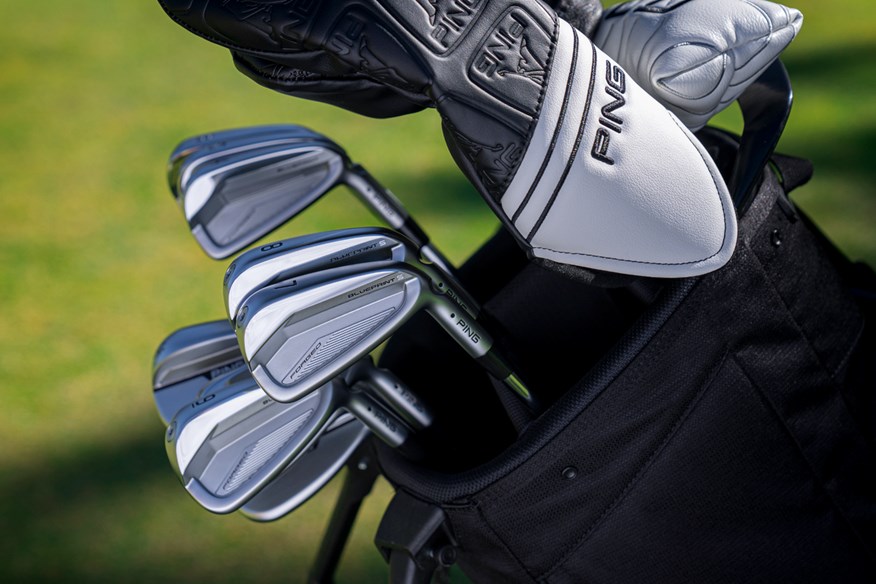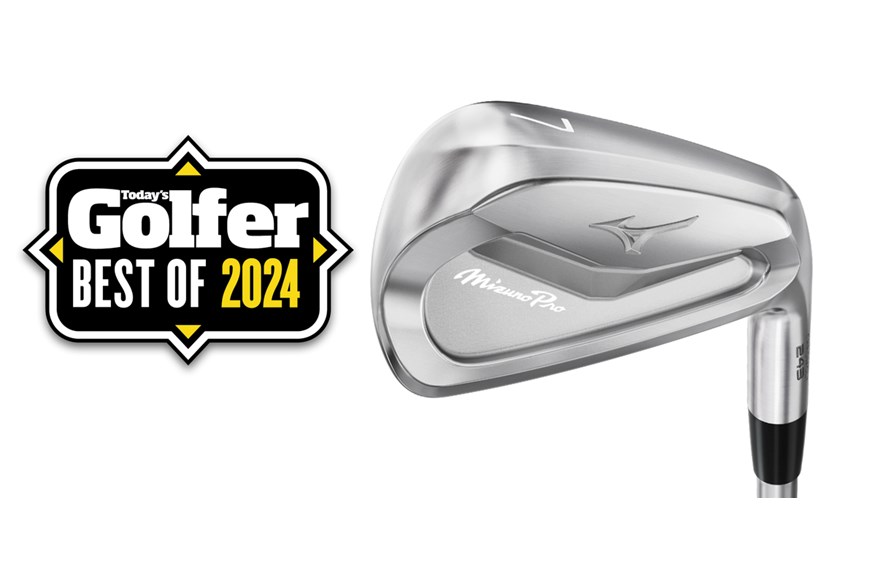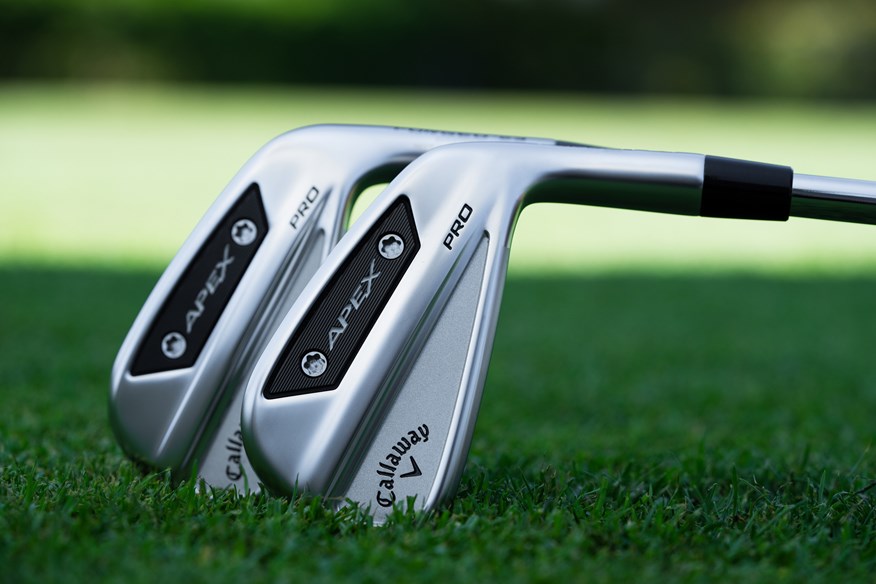Best Players’ Irons 2025: Our data-backed picks for skilled golfers seeking workability and control
Last updated:
Among the best golf irons are players’ irons, typically aimed at low handicaps to elite-level golfers. Whilst players’ irons aren’t quite as intimidating as blade irons, they’re not far off, but do offer a little more forgiveness. Lots of tour pros including Major winners Brooks Koepka, Jordan Spieth, and Shane Lowry opt for irons in the players’ category, appreciating the blend of control, workability, and forgiveness.
So what can be the pitfalls in looking for a set of players’ irons? The variations in design are more subtle for this category than any other so it can be difficult to know where to start and we often end up going on looks alone. That’s not to say that looks aren’t important, especially how you feel about offset, top line, and the club’s overall profile, which can massively affect your purchasing preference.
Ultimately, the club head is designed to give consistency in the finest detail in this category, so once you’ve narrowed down the club heads that appeal to your eye, you should be trying to identify what provides you with that consistency.
Consistency, in this instance, shouldn’t just be how wide your dispersion is. The clubs in this category should also be offering a predictable ball flight with easy-to-repeat results in apex height, carry distance, spin, feel, and turf interaction. Don’t make the mistake of thinkning these irons can cover up bad ball-striking though, these are designed to match the golfer’s skills and demands, not push your numbers further.
If you strike your irons consistently well but want a little more distance, the best players’ distance irons might be a better fit for you, whereas if your consistency from the fairways is lacking, we strongly recommend checking out the excellent options available in our best mid-handicap irons guide.
What are players’ irons?
Players’ irons are typically aimed at low handicappers to elite golfers, with many tour pros choosing to use models from this category. They have many similar characteristics to blades (small heads, weak lofts, nice looks) but often have a little more technology packed in to boost distance and/or forgiveness slightly.
What is the difference between players’ irons and game improvement irons?
Players’ irons are compact clubs with thinner toplines and smaller sweet spots, often found in blade or muscle-back designs, catering to low-handicap golfers who prioritize control, shot-shaping, and feel. These clubs offer less forgiveness and require precise ball striking. In contrast, game improvement irons are larger, featuring thicker toplines, more offset, and wider soles, making them more forgiving and easier to hit. Designed to enhance distance and accuracy, even on mishits, they are ideal for mid-to-high handicap golfers seeking consistency and improved performance.
Understanding the Benefits of Players Irons
Players’ style golf irons offer several benefits, particularly for skilled golfers who prioritize precision and control in their game:
Enhanced Shot Control: Players’ irons allow for better control over ball flight and trajectory. This is ideal for golfers who like to shape their shots, such as hitting fades or draws.
Superior Feedback: These irons provide a higher level of feedback, letting you feel exactly where on the clubface the ball was struck. This helps in fine-tuning your swing and improving your ball-striking consistency.
Workability: The compact design and minimal offset of players’ irons make it easier to manipulate the clubface, enabling more advanced shot-making capabilities, such as controlling spin and trajectory.
Aesthetic Appeal: Many golfers prefer the classic, sleek look of players’ irons, which can boost confidence and focus during play.
Consistency for Skilled Players: For low-handicap golfers who consistently strike the ball well, players’ irons offer a more consistent performance, as they are designed to deliver the intended distance and ball flight on well-executed shots.
Overall, players’ irons are tailored for golfers who prioritize precision, control, and the ability to execute a wide range of shots on the course.
Best At A Glance
Best overall: TaylorMade P770 irons | Buy Now
Best for distance: PXG 0317 CB irons | Buy Now
Best shaped: Ping Blueprint S irons | Buy Now
Best for feel: Srixon ZX7 MKII irons | Buy Now
Best for control and workability: Mizuno Pro 243 irons | Buy Now
Most forgiving: Titleist T150 irons | Buy Now
Let’s take a look at the models of players’ irons we believe are the best of the bunch in 2025.
Best Players’ Irons 2025:
A modern beauty that stands up to the best on offer in 2025.
In previous years we thought the P770 has been tough to categorize, but thanks to its players' profile (and weak 33° 7-iron loft), which TaylorMade crams with ball speed and forgiveness-enhancing tech, we believe this is now a clear modern-day players’ iron. And if you’re happy to accept tech within the players’ iron arena the P770 is just about as good as they come.
For those who question what hollow body constructions and thin fast faces bring to the party, comparing the P770 to TaylorMade’s P7MC gives a great explanation of what tech does for the category. Thanks to tungsten weighting inside and a hollow body construction the P770 has a slightly higher MOI. Which is good for golfers who hit lots of straight shots, but less attractive for golfers who like shaping shots onto a flag.
In our 2024 test, we saw the P770 produce a ball speed 2.8 mph faster than the 1° weaker loft P7MC. Thanks to the hollow body and thin face shots launched with a fraction less spin, yet peaked out higher, and hit the green at a steeper angle (0.4deg), while adding 6 yards of additional 7-iron carry distance. In my book, those are all seriously impressive stats that will help decent club golfers score a fraction lower, more often. Whichever way you want to look at it the P770 is a modern beauty, and even if they are due to be replaced later in the year I still regard them as one of the best players’ irons of 2025.
Read our full TaylorMade P770 irons review.
Pros
- High ball flight apex and steep descent angles.
- Packed with ball speed and forgiveness-enhancing tech.
Cons
- Not ideal for those who like to shape shots.
| Availability | 3-PW |
| Stock shaft | KBS Tour |
| 7-iron loft | 33° |
One of the best-performing players' irons of 2025.
Best players' irons for distance
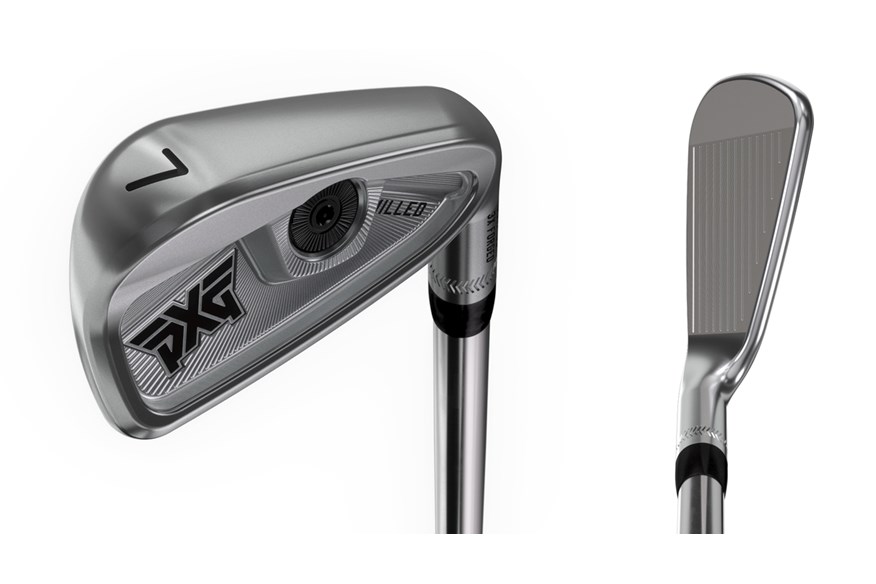

Through working with their ‘elite’ players PXG has come to understand that a majority of very good players just want a forged compact cavity back iron to play on tour. As good as hollow body constructions are, with their fast faces, many of the best players in the world just want consistency from their irons. So, fair play to PXG for listening to their team and creating a 0317 family just for elite players.
In typical PXG style, there are three 0317 irons calling out for the attention of golfers looking within the players’ iron category (0317 ST, 0317 CB, 0317 T) in 2024. Incredibly the T and CB both fly high at the top of our data sheet in the Players’ Iron category this year.
While both are lovely looking, feeling, and sounding irons I’ve plumped for the 0317 CB as picking within this category really shouldn’t come down to speed and distance. Yes, the slightly stronger lofted, hollow body 0317 T was 2.2mph faster on ball speed, it also produced three more yards of 7-iron carry distance, but our test pro still just felt the CB is a better choice for low single-digit handicappers looking for maximum control and shot to shot consistency.
From a 7-iron loft bang on our test average the one-piece forged CB head produced a ball speed faster than the test average, yet launched and flighted shots higher, with a steeper descent angle so hitting shots into a green will be much like throwing darts at a board. When we combine that performance with a smaller carry distance drop-off and tighter shot area than our test averages and you have one of the best-performing players’ irons of 2024 on your hands for 2025. Great work, with congratulations being due to PXG for their first forged cavity back iron endeavor.
Pros
- Excellent control and shot consistency.
- High flights with steep decent angles.
- Strong carry distances.
Cons
- Not the fast ball speeds within the 0317 family.
| Availability | 3-PW |
| Stock shaft | True Temper Elevate 95 (s), KBS Tour Lite (s), Mitsubishi MMT (g), Project X Cypher (g), UST Recoil Dart (g) |
| 7-iron loft | 33° |
A stunning iron with all the hallmarks of being a timeless classic
I’ve been testing Ping irons for 15+ years and I can confidently say I’ve never been so excited by any of the brand's previous player-focused models. The Blueprint S has a beautifully simple head shape, gone completely is the ‘boxy’ or longer blade length shape that critics used to put the brand's better player models down for. In my mind, the S is right there alongside the Mizuno Pro 243 and Srixon ZX 7 MK II as one of the very best-shaped players’ irons of the year.
Our test pro loved the forged feel, and sound, preferring the impact sensation to his own set of cast i230’s, a model he’s played for nearly 18 months. Comparing the two sets the pair are almost identical in terms of data bar the four yards carry distance gain in favor of the S. Just remember choosing players’ irons should be more about shape, feel, ball flight, and consistency, so if ball speed and distance creep into your thinking, you really should be looking at players distance irons instead.
In terms of distance, we saw that the S carried shots comfortably above our test average (3 yards), with the carry distance drop-off and shot area being just below and above the test averages respectively. That sort of performance says to me the model is well decked out to perform across the board for consistent ball strikers.
Any decision between the S and i230 is likely to come down to how much premium you put on playing forged irons. Out on tour, this is huge, hence why we've seen the Blueprint S see such success in the hands of the best players in the world. For decent club golfers price is also likely to be a factor as a 7-piece steel shafted set will set you back £140 more by opting for the forged S. When you’re making your decision don’t forget to factor in the new pocket cavity tech in the S long irons, which will offer up a little more forgiveness.
In my book, the Blueprint S is a stunning set of irons, thanks to being forged and deliciously well shaped they have all the hallmarks of being a timeless classic set, hence why they’re among my five best players’ irons of 2025.
Read our full Ping Blueprint S iron review.
Pros
- This is Ping's first forged cavity back iron in a decade.
- An excellent blend of sound, feel, and forgiveness within the chassis of a tour iron.
- Toe and shaft tip weights cleverly up MOI.
Cons
- Ping forged irons always represent a sizeable investment.
| Availability | 3-PW |
| Stock shaft | True Temper Dynamic Gold 120 |
| 7-iron loft | 33° |
An absolute beast of a tour-level forged iron.
Best players' iron for feel
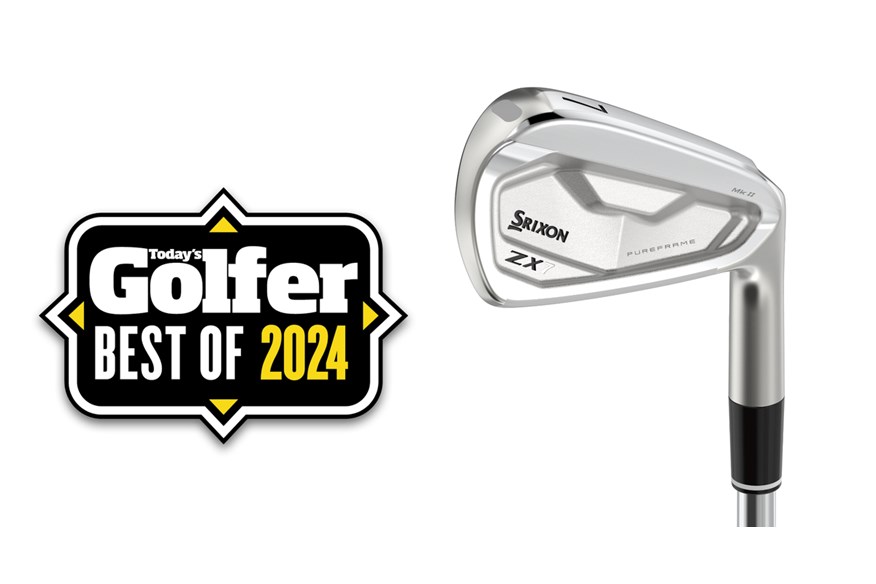

Why do we like it so much? Well, it’s got natural elegance, with a super straight topline, compact shape, and a lack of offset, all features that many decent players just adore. Importantly it also has a timeless classic design which isn’t going to feel old hat next year either.
Throw into the mix a third-best ball speed performance in the players’ iron category in 2024. A fourth-best carry distance, plus a 23.2% smaller carry distance drop-off and 67.1% smaller shot area than our test averages and you can see in the right hands the ZX7 is an absolute beast of a tour-level forged iron.
On top of everything else, our test pro thought the feel and feedback from the ZX7 was out of this world good, and right up there alongside the Mizunos of this world. If you find yourself dithering on the line between this model and its more speed and distance-focused sibling the ZX5 our data shows you’ll give three up yards or so distance but gain 500 RPM of backspin to play the ZX7. For proper players’ you’ll probably want the additional control brought by that extra spin.
Read our full Srixon ZX7 MKII irons review.
Pros
- Exceptional feel.
- Brilliant all-round performance.
- Fantastic looking with its timeless design.
Cons
- Slightly more speed and distance to be found in the ZX5.
| Availability | 3-PW |
| Stock shaft | Nippon NS Pro Modus3 Tour |
| 7-iron loft | 32° |
Quick and powerful with excellent control and workability.
I’m no Mizuno knocker but there’s no getting away from how the brand's iron launches over the last few years have become a bit predictable. Within the JPX family, I’ve seen the 919, 921, and 923 families covered over the last six years. We’re also now into the 2nd generation of Pro irons which by the time they’re retired will have spanned an additional 4 years too.
Hand on heart if I bought an original set of either franchise, I’d really struggle to say any subsequent generation, bar the introduction of springy chromoly steel, has been a huge step forward in terms of performance. That’s not a slight on the most recent updates but if you own previous models I reckon you don’t have to keep updating to the latest and greatest. However, if you’re new to Mizuno or just looking for a great set of players’ irons in 2025 the Pro 243s represent a very solid choice.
Cast your eye over our test data and you won’t find the Mizuno Pro 243 on the podium for any single metric. Yet our test pro was adamant the model felt quick and powerful (it produced a faster-than-average ball speed) and offered him the ball flight, control and look he wanted from a forged cavity back tour-level iron. To back up his thinking, compared to the 2° weaker Mizuno JPX923 Tour iron the Pro 243 hit shots higher, with a steeper decent angle and additional spin, features lots of decent players will appreciate. Factor in top draw levels of feel and you have an iron that’s well worth a position among our favorite five players’ irons of 2025.
If you’re looking at this category in 2025 it’s really hard to make a bad choice, as there are so many good irons within the players’ iron arena. I’d be drawn to the Mizuno Pro 243 not only because it’s a very solid performer across the board, but because there’s also a two life expectancy ahead of it. If though you’re the type of person who likes to have the very latest model in their bag, bear in mind the JPX family is also due for replacement later this summer.
Read our full Mizuno Pro 243 irons review.
Pros
- Expect beautifully shaped heads.
- Guaranteed great feel and feedback.
- Lots of shaft options at zero upcharge.
Cons
- All the Mizuno Pro irons are seriously costly options in 2024 compared to other brands
| Availability | 4-PW |
| Stock shaft | Dynamic Gold Mid 115 |
| 7-iron loft | 32° |
A low-flying iron with exceptional sound and feel.
Expect a beautiful head shape, cracking satin finish as well as a very pleasing impact sound and feel, even though the Pro didn’t quite nudge its way into the higher echelons of our top-performing players’ irons this year. My thinking comes down to a significantly lower ball flight and shallower descent angle than the major competition and our test averages. Typically we find face-face, hollow body irons launch higher and spin less so unless you specifically want to target lower ball flight I feel there are slightly better tech-focused players’ irons like the TaylorMade P770 out there.
If lowering ball flight is your desire you’ll be pleased to hear the model produced an above-average ball speed, bang-on-average carry distance, and a smaller carry distance drop-off and shot area than the majority of the 2024 players’ irons we hit. Bingo!
Read our full Callaway Apex 24 Pro irons review.
Pros
- Designed with input from the world's best players.
- Among the best-looking irons available.
- Incredible feel.
- Allow you to create the ultimate combo set
Cons
- More expensive than Apex '21.
| Availability | 3-AW |
| Stock shaft | Steel – True Temper Dynamic Gold Mid 115g (Reg, Stiff, X-Stiff); Graphite (custom-fit only) – Mitsubishi MMT 80g (Reg, Stiff) / 90g (X-Stiff) |
| 7-iron loft | 33° |
A competitively priced players' iron that will appeal to consistent ball strikers.
Best value players' iron
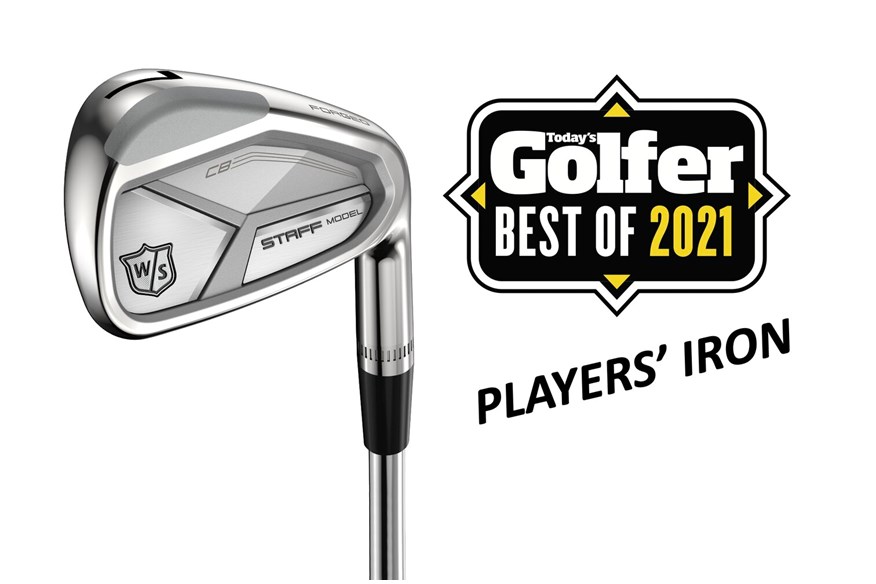

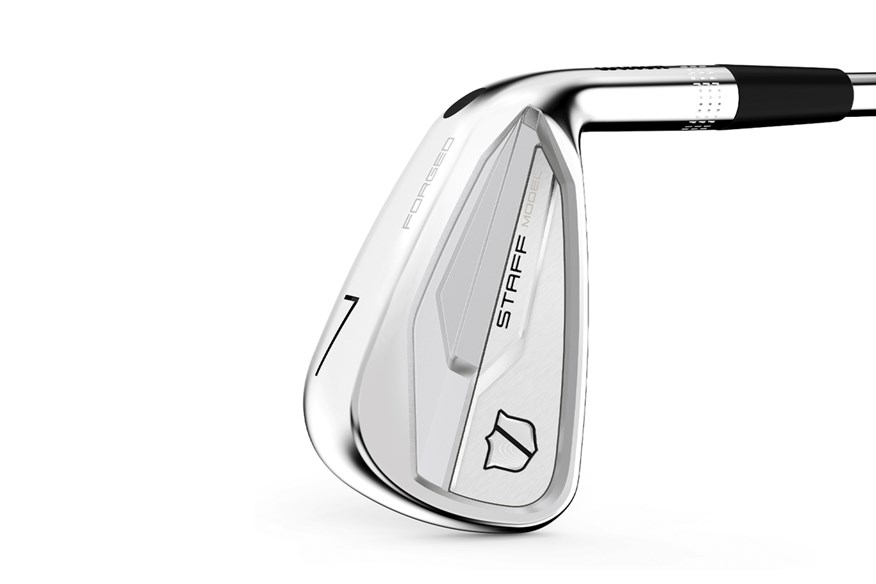
The CBs have very traditional lofts, which means in our test the model gave up 5 yards of 7-iron carry distance to our test average but also a massive 13 yards to the very longest in the category. That’s an equation that won’t work for too many club golfers. However, we'd say that doesn’t stop this model from being a very attractive traditional forged tour-level cavity back option in the right hands.
I love the head shape, our test pro really enjoyed the feel but the super shiny high-polished finish is highly likely to split opinion. Even Padraig Harrington plays his set raw without a plated finish to maximize feel and spin control. Also don’t fall into the trap of thinking weaker lofted players’ irons launch shots higher, as that’s not always the case. Our data highlights how thanks to the lack of offset the center of gravity is further forward and thanks to a heavier lower flighted shaft this model peaked shots out lower and hit the green at a shallower angle than our test averages. Definite food for thought.
Read our full Wilson Staff Model CB iron review.
Pros
- The price is a lot more attractive than some of the competition.
- Feel and feedback are right up there alongside the best.
- Wilson has a serious pedigree in the forged iron market.
Cons
- A very difficult iron to fault, so long as your game warrants a modern players' model.
| Availability | 4 – PW (Custom Order 2 and 3 iron) |
| Stock shaft | True Temper Dynamic Gold Mid 115 |
| 7-iron loft | 34° |
A stunning iron with more playability than some of its competitors.
Best looking players' iron
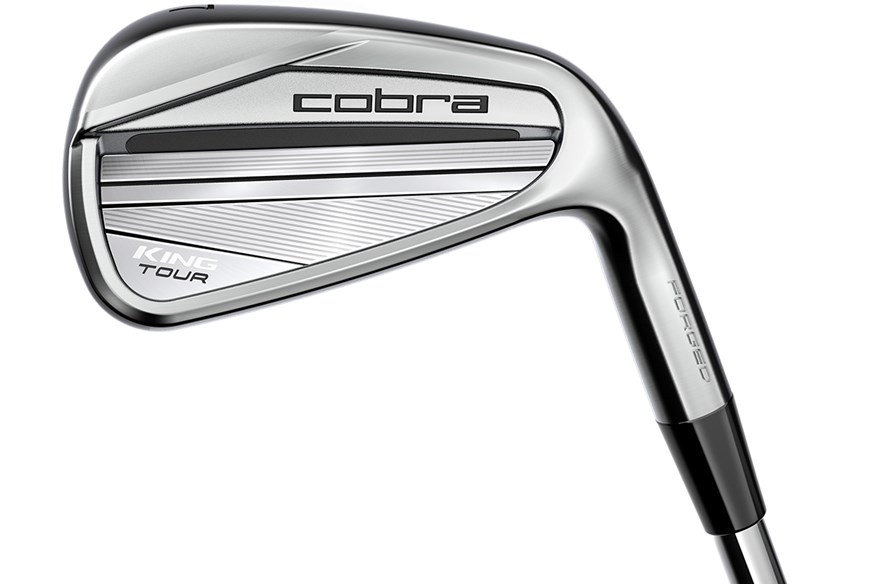

The five-times forged heads feel super soft. There’s a tiny bit of tech built-in with variable depth milled pockets in the shallow cavity backs, which add a fraction more playability on the long irons and increased flight control on the scoring clubs. Like any good players’ iron, the head shape is really attractive, there are no awkward areas that unduly draw the eye, making this an understated model for decent players who are happy to let their golf do the talking.
Data tends to be less important within this category, as decisions are more often made on subjective hunches. The Tour does itself no harm though by producing an above average carry distance for the category, while other metrics stick stubbornly around the average mark.
As the King Tour enters its second year I feel it’s still got a lot to offer as Cobra is now a proper player within the forged iron market. The Tour sits alongside the King MB blade and tour-level King CB plus there’s a hollow body Forged Tec and Forged Tec X, all of which can be dialed in individually to create your own perfect combo set. If you’re considering forged irons in 2025 Cobra’s cracking line-up deserves to be checked out.
Read our full Cobra King Tour irons review.
Pros
- An understated and attrcatively shaped players' iron.
- A solid all round performance package.
- Can mix and match with other models for a Cobra combo set.
Cons
- Doesn't excel in one particular area.
| Availability | 4-PW (3-iron and GW available via custom-fitting order) |
| Stock shaft | Stiff or regular flex steel KBS $-Taper 120 |
| 7-iron loft | 33° |
An excellent option for high-level golfers seeking added forgiveness.
Most forgiving players' iron
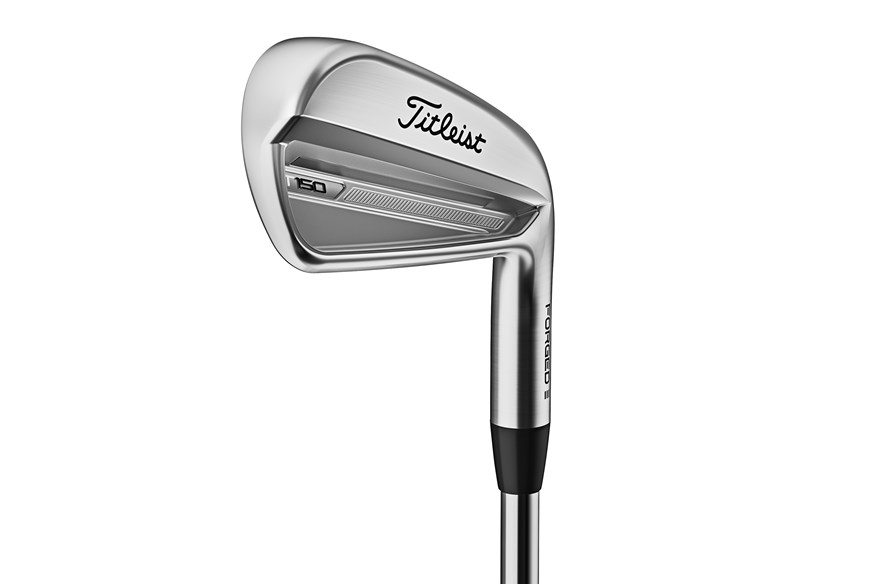

For our test pro, the T150 produced 4.5mph more ball speed than the T100. It launched and flighted shots higher than our test average and despite the stronger loft shots hit the green at a steeper angle too. Performance which Titleist will say comes from the head now having its own identity (with a wider sole etc) rather than just being a 2° stronger version of the T100. Throw in 8 yards more carry distance with a 7-iron and very few club golfers in their right mind will feel the T100 is their better option.
That sort of performance puts the T150 among our top 10 performing players’ irons of 2024. If you find yourself drawn to a set you’ll be delighted to hear at just 4 yards the model clocked up our second smallest carry distance drop-off and third smallest shot area of the entire 25 model line-up. Impressive stuff.
Read our full Titleist T150 irons review.
Pros
- A top performer for dispersion and carry distance drop-off.
- Can be combined with the T100s for a combo set with a blend of distance and control.
- Slightly more powerful and confidence-inspiring than the T100.
Cons
- Sacrifices a touch of precision for ball speed.
| Availability | 4-PW |
| Stock shaft | True Temper Project X LZ (Low Launch, Low Spin steel) or Mitsubishi Tensei White AM2 (Low Launch, Low Spin graphite) |
| 7-iron loft | 32° |
Offering outstanding value and a competitive performance package.
Best value players' iron
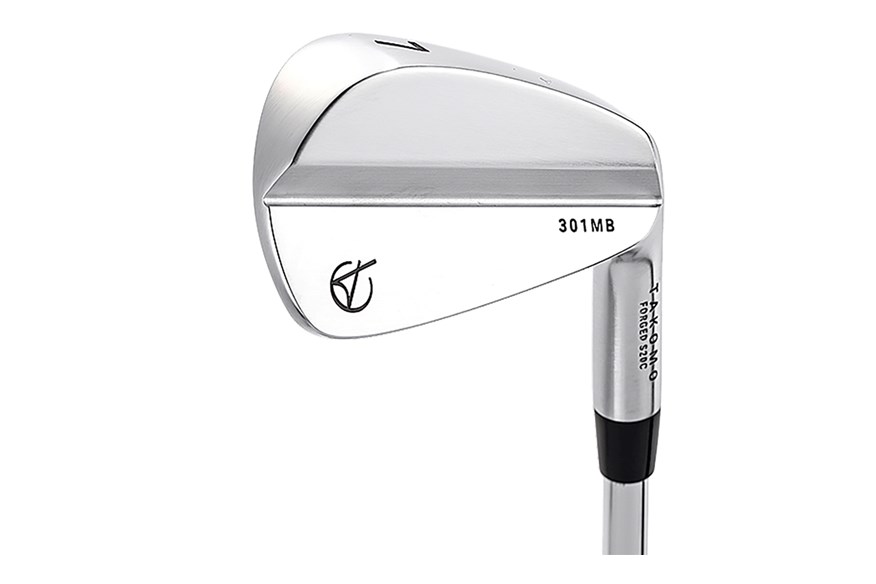

Between them, the pair produced carry distance drop-offs and shot areas smaller than our test average which will go some way to making the models playable on the golf course. Value for money isn’t something we see a lot of in the players' iron category but if I had a sub £500 budget to shop in the category in 2025 Takomo would certainly be my first port of call.
Choosing between the two models I’d plump for the slightly sleeker, less angular, and more traditional satin-clad 301 CB, it's 2° weaker in the 7-iron, which means at 170 yards carry distance it was 6 yards back from the slightly more powerful 201. The only slight drawback is you will need to order online without a fitting, since seeing greater success in Europe though you can now order in GBP.
Pros
- Excellent value for money.
- Sleek and clean looks.
- A solid all-round performance package.
Cons
- No custom fitting options.
| Availability | 4-PW |
| Stock shaft | KBS Tour Regular |
| 7-iron loft | 34° |
Best Players’ Irons: The Data
Below is the data from our independent testing of the best golf players’ irons available in 2025. You can read about all the other models that didn’t make our shortlist above in our golf club review pages or category-specific irons pages.
Test Pro data:
| Iron | 7-Iron Loft | Ball Speed | Launch Angle | Backspin | Height | Descent Angle | Carry Distance | Carry Distance Drop Off | Shot Area |
| PXG 0317 T | 32° | 125 MPH (1) | 15.6° | 5343 RPM | 32 YDS | 45.1° | 182 YDS (1) | 6 YDS | 118.2 SQ YDS |
| PXG 0317 CB | 33° | 122.8 MPH | 16.6° | 5568 RPM | 32 YDS | 45.7° | 179 YDS (T2) | 7 YDS | 142.1 SQ YDS |
| Vega VDC | 31° | 124.4 MPH (2) | 14.8° | 5703 RPM | 30 YDS | 44.4° | 179 YDS (T2) | 8 YDS | 236.8 SQ YDS |
| Srixon ZX7 MK II | 32° | 122.9 MPH (3) | 16.7° | 5757 RPM | 32 YDS | 46.1° | 178 YDS | 7 YDS | 57.4 SQ YDS |
| Sub 70 659 CB | 32° | 122.8 MPH | 15.3° | 5683 RPM | 30 YDS | 44.2° | 178 YDS | 8 YDS | 70.4 SQ YDS |
| More MOD 1 | 32° | 121.5 MPH | 15.9° | 5370 RPM | 30 YDS | 44.1° | 178 YDS | 2 YDS (1) | 48.4 SQ YDS (2) |
| Ping Blueprint S | 33° | 121.3 MPH | 16.7° | 5498 RPM | 31 YDS | 45.1° | 177 YDS | 9 YDS | 188.1 SQ YDS |
| Titleist T150 | 32° | 122.6 MPH | 17.5° | 5686 RPM | 34 YDS | 46.8° | 177 YDS | 4 YDS (2) | 53.6 SQ YDS (3) |
| Takomo 201 | 32° | 122.6 MPH | 15.7° | 6070 RPM | 31 YDS | 45° | 176 YDS | 9 YDS | 119.7 SQ YDS |
| Cobra King Tour | 32° | 120.9 MPH | 15.4° | 5534 RPM | 29 YDS | 43.1° | 176 YDS | 9 YDS | 253.8 SQ YDS |
| TaylorMade P770 | 33° | 122.3 MPH | 17.8° | 6143 RPM | 34 YDS | 47.5° | 175 YDS | 9 YDS | 200.7 SQ YDS |
| Mizuno JPX923 Tour | 34° | 121 MPH | 16.2° | 5704 RPM | 30 YDS | 44.6° | 175 YDS | 9 YDS | 171 SQ YDS |
| Vega VSC | 31° | 121.7 MPH | 15.2° | 5943 RPM | 29 YDS | 43.8° | 175 YDS | 14 YDS | 387.8 SQ YDS |
| Callaway Apex 24 Pro | 33° | 122.4 MPH | 16.2° | 6026 RPM | 27 YDS | 43.3° | 174 YDS | 7 YDS | 128.1 SQ YDS |
| Callaway Apex TCB | 34° | 121.9 MPH | 16.6° | 5189 RPM | 32 YDS | 46.1° | 174 YDS | 5 YDS (3) | 46 SQ YDS (1) |
| Mizuno Pro 243 | 32° | 122.2 MPH | 16.6° | 6035 RPM | 32 YDS | 46.3° | 174 YDS | 18 YDS | 387 SQ YDS |
| Ping i230 | 33° | 121.3 MPH | 16.4° | 5821 RPM | 31 YDS | 45.7° | 173 YDS | 19 YDS | 248.9 SQ YDS |
| Sub 70 639 CB | 32° | 122.3 MPH | 15.4° | 6584 RPM | 30 YDS | 45.4° | 173 YDS | 13 YDS | 266.5 SQ YDS |
| Callaway Apex 24 CB | 34° | 120.6 MPH | 16.7° | 6235 RPM | 31 YDS | 46.2° | 170 YDS | 9 YDS | 151.2 SQ YDS |
| Takomo 301 CB | 34° | 120 MPH | 17.3° | 6410 RPM | 32 YDS | 46.4° | 170 YDS | 7 YDS | 152.6 SQ YDS |
| TaylorMade P7MC | 34° | 119.5 MPH | 18° | 6226 RPM | 33 YDS | 47.2° | 169 YDS | 11 YDS | 135.3 SQ YDS |
| Wilson Staff Model CB | 34° | 118.6 MPH | 16.3° | 6221 RPM | 29 YDS | 44.8° | 169 YDS | 6 YDS | 76.8 SQ YDS |
| Titleist T100 | 34° | 118.1 MPH | 17.3° | 5677 RPM | 31 YDS | 45.4° | 169 YDS | 8 YDS | 107.2 SQ YDS |
| Ben Hogan PTX Tour | 33.5° | 117.9 MPH | 16° | 5767 RPM | 28 YDS | 43.5° | 169 YDS | 11 YDS | 335.5 SQ YDS |
| Titleist 620 CB | 34° | 117.9 MPH | 17.9° | 6127 RPM | 32 YDS | 46.5° | 167 YDS | 13 YDS | 274.3 SQ YDS |
| Average | 121.4 MPH | 16.4° | 5853 RPM | 30.9 YDS | 45.3° | 174.2 YDS | 9.1 YDS | 174.3 SQ YDS |
How we tested the best players’ irons
We asked the leading brands to send us their 2024 players’ irons in our test Pro Neil Wain’s specs.
We created an indoor test lab at Keele Golf Centre to ensure a controlled environment, which meant we could use premium Titleist Pro V1x golf balls and a Foresight GC Quad launch monitor to create the most reliable data possible. We rejected major misses but recorded how shots launched, span, peaked out, and how far they flew in which direction.
See more about how TG tests golf clubs and other equipment.
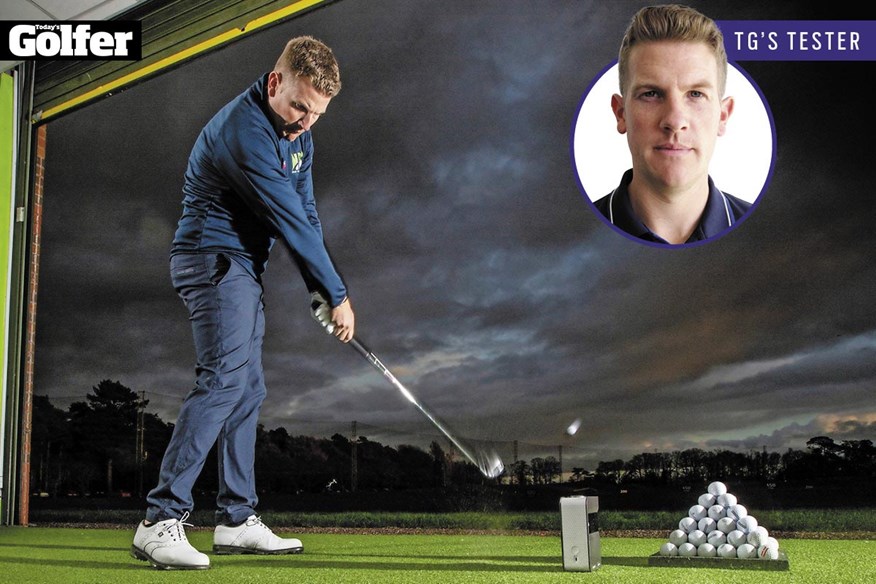
Key Features to Consider When Buying Players Irons
Choosing a new set of irons is a decision not to be rushed, irrespective of your handicap. It’s critical for all clubs, but particularly as a new set of irons will likely be the biggest investment you make in your game and shouldn’t need upgrading for several years. Here are the key things to prioritize when it comes to selecting a new set of players’ irons.
Ability
As the name suggests, players’ irons are aimed at high-level golfers who strike the ball consistently well from the fairway and off the tee. With smaller head profiles and weaker lofts than many models aimed at the mid-handicap market, players’ irons are less confidence-inspiring and will do little to support those chasing added distance. Ensure you have sufficient swing speed and confidence in your ball-striking ability before committing to purchasing a traditional players’ iron.
Feel
The feel of a golf shot is integral, allowing you to learn from the interaction experienced between the ball and the club at impact. Feel is determined by the vibrations traveling up the shaft of the club, as well as the sound of the impact. Every iron will have its own unique ‘feel’, and it’s therefore imperative to make sure you select a model that encourages this feedback to best control ball flights and ultimately help you to shoot lower scores.
Workability
The ability to draw and fade a ball into awkward pins is a key skill for better players, and players’ irons are designed to enhance this shot-shaping ability. Consider your natural ball flight and which shot shape you struggle with most before heading to the range with a few different options to see which model provides you with the workability you desire.
Distance
Players’ irons are designed with workability and control in mind as opposed to distance, as high-level players are typically able to generate sufficient levels of ball speeds to hit their ideal yardages with each club. For those who feel they have the ball-striking ability to benefit from this type of iron, yet lack a touch of ball speed, we suggest checking out our guide to the best players’ distance irons which pack in a bit more distance-boosting technology.
Custom fitting
Often overlooked, but dialing in your optimal set-up through a custom fitting session will likely be of more benefit than the slight performance edge you hope to achieve by selecting one set of irons over another. If you’re not sure where to start, we suggest nipping down to your club Pro, or nearest golf retailer to explore the shaft, flex, lie angle, and a whole host of other variables that will help you extract the most value from your chosen model.
Budget
As with most things in the golf world, prices for irons can vary considerably. Value for money is subjective and therefore you should spend however much you feel comfortable with, be it a premium set, or one with a more competitive price point.
If you’re ready to upgrade in 2025 but can’t justify the dizzying price tags of the games’s powerhouse brands, check out our pick of the best players’ irons from 2023. Many of these recently replaced models are now available at reduced prices and still deliver a modern and competitive performance package.
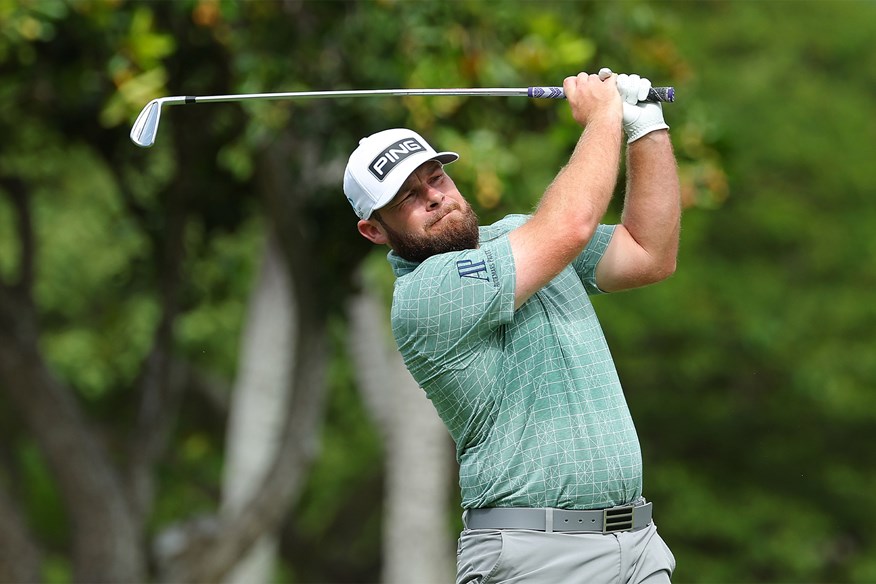
Best Players’ Irons: FAQs
Who are players’ irons for?
Golfers who strike their irons consistently well and don’t need much help with distance or forgiveness should look to the players’ irons category. For those golfers wanting ultimate workability and control, then blade irons could also be worth considering. Both players’ irons and blade irons are considerably less forgiving than models aimed at mid and high-handicap golfers.
What is the difference between players’ irons and players’ distance irons?
Players’ distance irons will typically create more speed and distance than blades or players’ irons, and while they may not generate quite as much spin, the high launch helps with stopping power on the greens. TaylorMade P790 irons are one of the best players’ distance irons and have set the standard in this category for a number of years.
What irons do Tiger Woods and Rory McIlroy use?
Both Tiger and Rory game TaylorMade irons. Tiger uses TaylorMade P7TW irons (4-PW) with True Temper Dynamic Golf Tour Issue X100 shafts, whereas Rory opts for the brands’ P760 4-iron and P730 Rors Proto irons (5-9) with Project X Rifle 7.0 shafts. Bear in mind, however, that these are two of the best ball strikers of all time, and you should consider which TaylorMade iron is best for you before splashing the cash on your idol’s exact model.
About the author

Simon Daddow – Today’s Golfer Equipment Editor
Having tested and played more than 10,000 clubs in his life, what Simon doesn’t know about golf clubs isn’t worth knowing.
He spent a large part of his career as a golf club maker and product development manager, and has worked in the golf industry for more than 30 years. He joined EMAP Active (now Bauer Media) as Equipment Editor in 2006 and has worked for both Today’s Golfer and Golf World.
You can contact Simon via email and follow him on Twitter for loads more golf equipment insight.
-
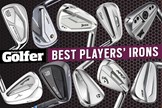 We've tested 2022's players' irons to find the year's best models. golfers in 2022.
We've tested 2022's players' irons to find the year's best models. golfers in 2022.
-
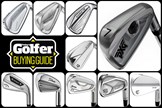 Best Players' Irons 2024
Best Players' Irons 2024
-
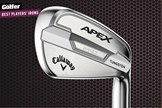 The Callaway Apex 21 iron.
The Callaway Apex 21 iron.
-
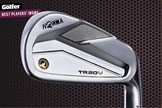 The Honma TR20V iron.
The Honma TR20V iron.
-
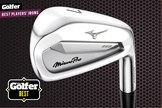 The Mizuno Pro 223 is one of the best players' golf irons.
The Mizuno Pro 223 is one of the best players' golf irons.
-
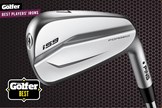 The Ping i59 is one of the best players' golf irons.
The Ping i59 is one of the best players' golf irons.
-
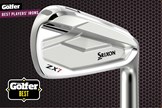 The Srixon ZX7 is one of the best players' golf irons.
The Srixon ZX7 is one of the best players' golf irons.
-
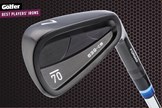 The Sub 70 639 CB iron.
The Sub 70 639 CB iron.
-
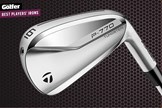 The TaylorMade P770 iron.
The TaylorMade P770 iron.
-
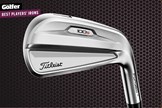 The Titleist T100S iron.
The Titleist T100S iron.
-
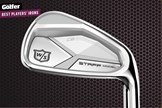 The Wilson Staff Model CB iron..
The Wilson Staff Model CB iron..
-
 Neil Wain is Today's Golfer's test pro and put the 2022 players' irons through their paces.
Neil Wain is Today's Golfer's test pro and put the 2022 players' irons through their paces.
